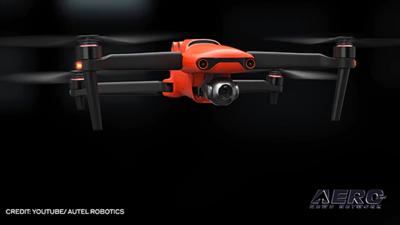Tue, Jan 04, 2022
Best Practices for Wildlife Photography: Adequate Distance and space
The yearly tradition of unmanned aviators has been quiet this year, in a hobby that often sees swathes of excited new drone owners exploring the legal limits of their fresh new toys. It seems that the industry has come a long way towards educating buyers on best practices, however, with fewer incidents involving drones that make nationwide headlines.

One wildlife research specialist stepped in this year, however, stressing not just regulations, but best practices. For users regarding wildlife following a wildlife group's use of unmanned recording equipment a little too close to the critters they protect.
The Cornwall Seal Group Research Trust issued a reminder to fellow wildlife enthusiasts after its founder Sue Sayer witnessed a group of resting seals sprint underwater, frightened by the rapid appearance of a drone. While understanding of the interest felt towards critters, she reminds operators that many animals boast superior senses to humans and often experience serious stress response from what seems reminiscent to a fast moving, shrieking aerial predator. She stresses a simple rule for non-interventionist appreciation of creatures: 100 meters distance, and from humans, 50 for simplicity's sake. UK law differs from some other countries, requiring drones to stay at least 150m away from residential, recreational, commercial, and industrial areas.

While those rules may seem too restricting to operators of other nationalities, local residents note that there are "plenty of approved fields and zones ideal for drone flight".
Some note that the applicable UK drone code doesn't contain hard rules, instead stating "do not fly where you'll disturb or endanger animals and wildlife", which will probably cause headaches among those who disagree as to what the threshold of 'disturb' is. For those acclimating to operation in the United Kingdom, an operator legislation and short flyer ID test are necessary to start, but that introduction saves much pain later on by preventing the pilot from running afoul of the law.
More News
Aero Linx: Model Aeronautical Association of Australia MAAA clubs are about fun flying, camaraderie and community. For over 75 years, the MAAA has been Australia’s largest fl>[...]
Touchdown Zone Lighting Two rows of transverse light bars located symmetrically about the runway centerline normally at 100 foot intervals. The basic system extends 3,000 feet alon>[...]
“Discovery and innovation are central to our mission at Virgin Galactic. We’re excited to build on our successful record of facilitating scientific experiments in subor>[...]
How To Get A Story On Aero-TV News/Feature Programming How do I submit a story idea or lead to Aero-TV? If you would like to submit a story idea or lead, please contact Jim Campbel>[...]
Student Pilot Reported That During Rotation, “All Of A Sudden The Back Of The Plane Kicked To The Right..." Analysis: The student pilot reported that during rotation, “>[...]
 ANN's Daily Aero-Linx (05.02.24)
ANN's Daily Aero-Linx (05.02.24) ANN's Daily Aero-Term (05.02.24): Touchdown Zone Lighting
ANN's Daily Aero-Term (05.02.24): Touchdown Zone Lighting Aero-News: Quote of the Day (05.02.24)
Aero-News: Quote of the Day (05.02.24) ANN FAQ: Contributing To Aero-TV
ANN FAQ: Contributing To Aero-TV NTSB Final Report: Cirrus Design Corp SR20
NTSB Final Report: Cirrus Design Corp SR20




